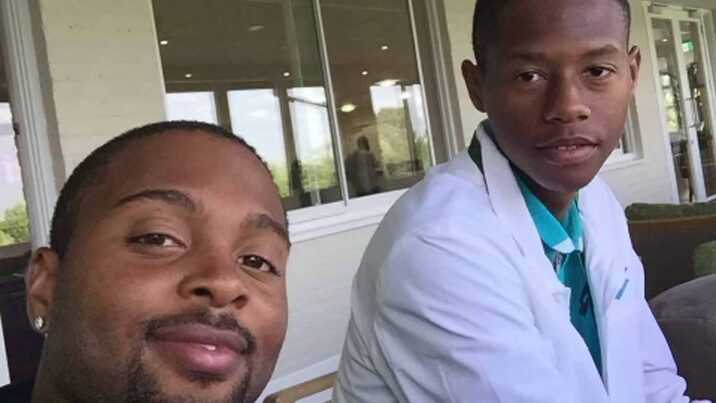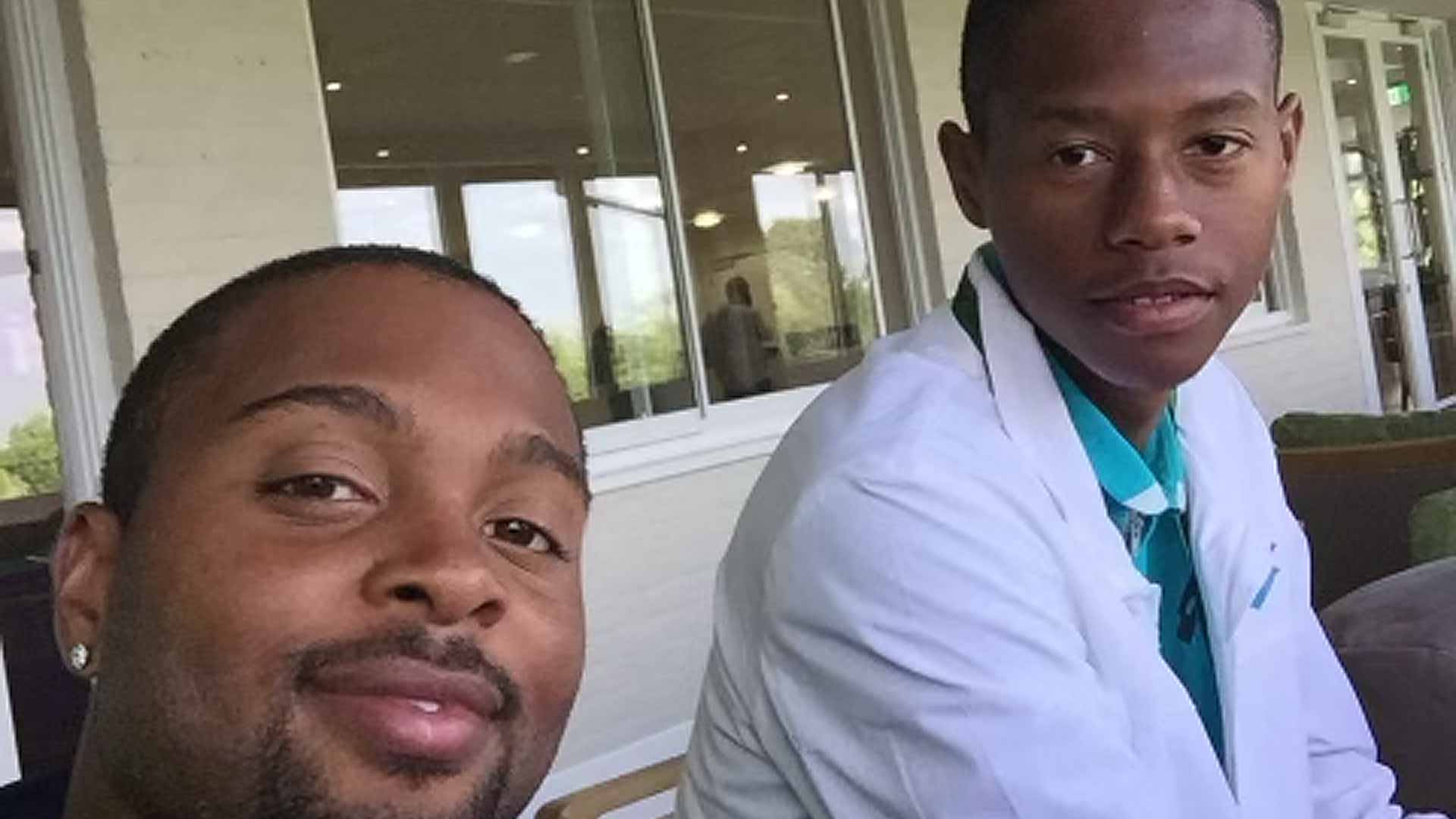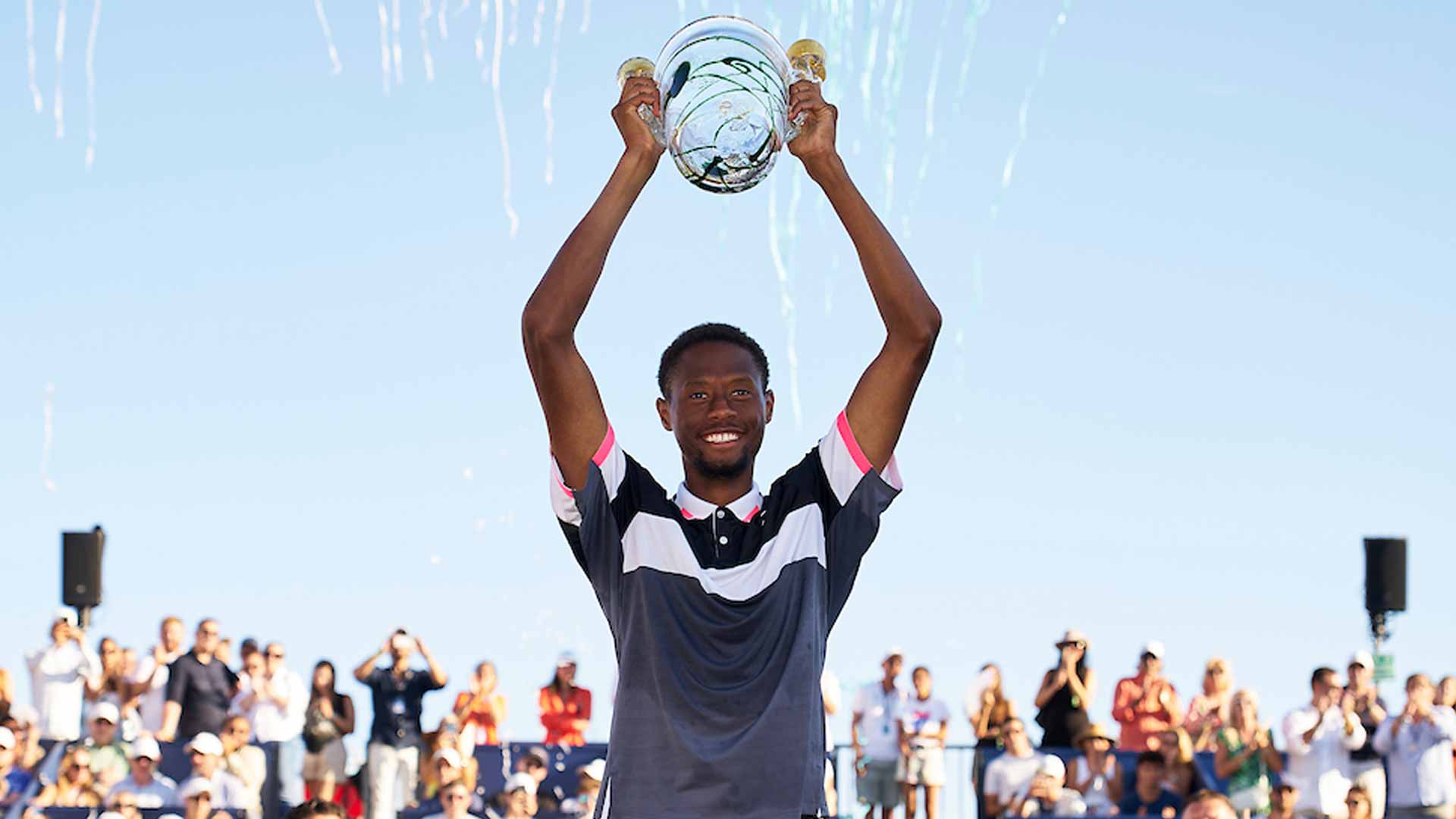
When Christopher Eubanks walks on No. 1 Court at Wimbledon Tuesday for his Wimbledon quarter-final against Daniil Medvedev, it will be like he is living in a dream. The big difference is that his moment will be real.
Less than four months ago, Eubanks was on the verge of the Top 100 in the Pepperstone ATP Rankings, but struggling to break through. For a former college tennis player at Georgia Tech, reaching the Top 100 was more than just a number. It was a sign of belonging.
Little did he know that four months later he would be at a career-high No. 31 in the Pepperstone ATP Live Rankings, own an ATP Tour title and be competing for a place in a major semi-final — against one of the best players in the world, Daniil Medvedev.
Eubanks, who has become known on the Tour for his infectious smile and lively personality, has persevered through the moments when the Top 100 seemed so close but so far. He was never sure if his dream would come true. Now the American has quickly become one of the most feel-good stories in sports.
Hugh Jackman and Mike Tyson have congratulated him and on Tuesday Eubanks was on Good Morning America with Robin Roberts, one of the most iconic figures in American broadcasting. It has been a special moment for his father, Mark Eubanks Sr., who has watched proudly from Atlanta.
“I’d have to go back down memory lane and just go back to the challenges and the changes that we had to go through to get him to where he is at this moment,” Eubanks Sr. told ATPTour.com. “It’s going to be, I would say, an emotional moment for me because I remember when he couldn’t hit a tennis ball and nobody wanted to hit with him.”
A UNIQUE EDUCATION
Mark was on the younger end of his parents’ 10 children. One of his older brothers, Dr. Samuel Eubanks, was 17 years his elder. When Samuel came across certain things that interested him, he would often share his discovery with Mark. One day, he found racquetball and began playing it with his brother.
Samuel always won early on. But once Mark became competitive, they switched to tennis. Samuel’s son, Samuel Graham Eubanks III, known as ‘Trey’, would play the sport for Michigan State University from 1996-99 and remains fifth on the school’s all-time wins list. Samuel encouraged Mark to introduce his first son, also Mark, to tennis. Mark is Chris’ older brother by 13 years.
“I would take [Chris] out to the court in the stroller, he would sit and watch us,” Eubanks Sr. recalled. “My older son, he had a decent game. He got a college scholarship, but he never had the passion that Chris had, for whatever reason. But it worked out.
“I don’t know how old [Chris] was, but he started walking. And then he started running. And we would take him out to the court and he wouldn’t sit long enough. So I just put a racquet in his hand. It was around age two, I think, that I put a racquet in his hand and I noticed he had good eye-hand coordination and then we just built from there.”
Eubanks Sr. has been in pastoral ministry for more than 35 years. But he also worked for an airline. Since he did not begin playing tennis until his 30s, Eubanks Sr. did not receive a formal education in the sport. Every day before work, he would join his colleagues on the court and they gave him small nuggets, like how to change his grip.
Eubanks Sr. picked up everything he could from those around him, including the late Ernie Peterson, whose daughter, Jewel Peterson, was a standout at the University of Southern California before taking on the pro tour. Jewel, who would spend time developing the game of Coco Gauff, a close friend of Eubanks’, played with two hands on both sides.
So early on, Christopher Eubanks was taught by his father to use two hands on both sides. When Chris played his first tournament aged six, he still used two hands.
“They had junior racquets, but I was a proponent of teaching them with a regular-size racquet and regular balls, because he started with two hands on both sides,” Eubanks Sr. said. “And I told him I was switching his backhand side by changing his grip. And he did well at age six, when he played his first tournament, and then I took the hand off the forehand. And then I eventually took the hand off of the backhand, but it took him a while to get adjusted to it.”
LOCAL MENTORS
The Eubanks Family often played at local, county courts and facilities like Burdett Park, and sometimes in an undeveloped subdivision where there were two courts that were rarely used. Due to the heat in Atlanta, Eubanks Sr. would often take Chris to the courts early in the morning or in the evening after work.
“We didn’t have the ideal tennis culture to grow up in,” Eubanks Sr. said. “We didn’t have the resources and we just did what we knew and could afford.”
From an early age, Eubanks looked up to and was mentored by local stars Jarmere Jenkins and Jermaine Jenkins, who after their own successful careers went on to serve as hitting partners for Serena Williams and Venus Williams, respectively. Also involved through it all was his mother, Carla.
There are videos on YouTube of a pre-teen Eubanks training with his older cousin, Trey, who played a major role in helping develop his game from 10-14. In one of those videos you can see Eubanks Sr., dressed in a suit, on the side of the court giving Eubanks concise advice.
“I want you to go get the ball. Go get the ball,” he said. “That’s not it, go get the ball.”
Eubanks Sr. said: “I always told him to step up and hit the ball. There were some coaches that got on me about teaching him to catch the ball early, they thought it was too early.
“They used to stand behind the baseline and wait on the ball to bounce and come back because we had all hard courts. But I said, no, you can’t stand back. When you learn how to catch it early, then you’ll ultimately reap the harvest of that.”
Little did he know that a decade and a half later, a 6’7″ Eubanks would be exploiting that very tactic to shine at Wimbledon. The 27-year-old has hit a staggering 247 winners through four matches and moved into the net 194 times, winning 64 per cent of those points.
This breakthrough is the result of a lot of hard work for many years. Early on, Eubanks Sr. did not prioritise his son’s results. It was about the future.
“I would always play him up. He was like 10 years old, playing 14s. And so I didn’t care if he would win a match or not because he’s not supposed to win. But he won quite a few matches playing up,” Eubanks Sr. said. “And so when he saw that ball coming, he had to react to it faster at an early age. And that’s how he developed his game, really.”
Eubanks began participating in matchplay sessions at the South Fulton Tennis Center. His mother wanted him to receive higher-level coaching, so he would increasingly spend time at the facility under the tutelage of the Young Family. Eubanks would later work for Donald Young Sr. and learn from former Top 50 star Donald Young. Aged 15, Eubanks began travelling across the world as a hitting partner for Young. Junior tournaments were not his priority. In high school, he did not play at the top of his lineup.
Photo: Donald Young
“Chris didn’t play a lot of junior tournaments. But he was just as good, probably better than them,” Eubanks Sr. said. “I had to always reinforce to him that what’s for you is for you. You don’t have to worry about what they’re doing.”
THE NEXT LEVEL
One tournament he played was the USTA Southern Sectional Championships in Mobile, Alabama. Among the crowd was then-Georgia Tech assistant coach Derek Schwandt, who is now the head coach at Liberty University.
“Immediately, you could see he had a special talent, how his technique was beautiful and he absolutely crushed the ball. [He had an] amazing forehand and pretty good feel for a guy that could hit a ball that hard,” Schwandt said. “You could quickly see his talent, so all the coaches that were at this tournament were watching him: Alabama, Tennessee, Ohio State, whoever was there. He was pretty under the radar because he didn’t play much USTA.
“His ball-striking and technique was clear, but he also was a fighter… When the tournament was over, I [told head coach Kenny Thorne], ‘Kenny, we need to get this guy on campus and we need to offer him a full scholarship and make him a Yellow Jacket’.”
[ATP APP]
That was the endgame for Eubanks Sr. He did not necessarily dream about his son playing in the second week at Wimbledon.
“My primary focus with him was that he got a college scholarship,” he said. “We had no idea that he could do what he has done. I focused on going to school, getting an education, and then whatever happens, will happen.”
But Eubanks continued to improve. All those years of the Eubanks Family prioritising development over wins paid dividends as he became a two-time All-American at Georgia Tech.
“His dad had a long-term vision. He wasn’t obsessed with winning an 18-and-under tournament every weekend,” Schwandt said. “He wanted Chris to be good in the long run. I’m sure he could see his son was a special talent, so he didn’t want to take any shortcuts. And he was all for the long-term development.”
TURNING PRO
As he embarked on a professional career in 2017 after three years in college, Eubanks surged into the Top 200 quickly. Although his goal of reaching the Top 100 proved elusive, Eubanks earned fans inside and outside the locker room for how he carried himself. “The Mayor”, as Donald Young calls him, became one of the most well-liked players on Tour for his character.
“That was number one for me. Because I knew that tennis would only last for so long. But your character and your values will be there after tennis is over,” Eubanks Sr. said. “And so even when playing junior tennis when other kids were cheating and obviously cheating, I said, ‘Don’t worry about that. You just keep playing your game and that will pay off for you ultimately because of your character and all that goes along with it.’”
One of his idols growing up was Arthur Ashe. In college Eubanks won a sportsmanship award named after Ashe and as a professional, he played Ashe in a documentary. “That was very emotional for me because I made him read Arthur Ashe’s book, and he read it,” Eubanks Sr. said. “And it was more about his character than about his tennis.”
Eubanks has been open about his struggles. The American even tried other things while continuing his professional tennis journey. In September 2021, his team reached out to Tennis Channel to see if there were any opportunities to give broadcasting a shot. Last April, he made his Tennis Channel debut during the week of the Barcelona ATP 500. Everyone was impressed and he returned in October during the week of the Basel and Vienna ATP 500 events.
“He’s an intelligent, naturally gifted TV analyst,” one of his producers said. Eubanks has spent time with his TC family since, including during his run to this year’s Miami Open presented by Itau quarter-finals, calling matches from the booth for part of a day. He plans to continue doing so in the months ahead when time allows.
But while most of the attention on Eubanks’ surge began in Miami this March, his ascent really began after his time at Tennis Channel last October. He made his first ATP Challenger Tour final of the year in Charlottesville and then another the following week in Knoxville. Eubanks lost to friend Ben Shelton (whose father Bryan Shelton is a former Georgia Tech star) in both those finals, but with those results and a semi-final to end the season, he was primed for a Top 100 push in 2023.
Eubanks won his first ATP Tour title this year in Mallorca. Photo: Mallorca Championships
Asking Eubanks and those around him, everyone has a different answer for exactly why at 27 he has made such a jump. Some point to his focus on the small details, like taking care of his body with physio treatment and paying even closer attention to his diet. Others point towards his effort to build strength in the gym, which was not always his favourite place. During this year’s Dallas Open, WTA star Sloane Stephens in a video for the tournament famously called him “Daddy Longlegs” and Frances Tiafoe calls him “Toothpick” because of “how skinny he is”.
Then there is his work on the court with coach Ruan Roelofse, and his increasing willingness to commit to his aggressive gamestyle. But according to the coach who recruited him to Georgia Tech, Schwandt, it is tough to point to just one thing.
“I don’t think it was any magic pill in the last year, it’s just he continued to chip away, believe in himself a little bit more, perhaps get a little confidence,” Schwandt said. “Tennis is such a mental game, the mental game is everything. So a little extra belief and confidence with more and more success — I’m sure that helped him.”
Eubanks has worked hard throughout his career to reach this point. No matter what happens against Medvedev, Eubanks walking on the court to perform in front of the world is the biggest victory of all.
“He persevered through all of the challenges and all,” Eubanks Sr. said. “He did that on his own.”


